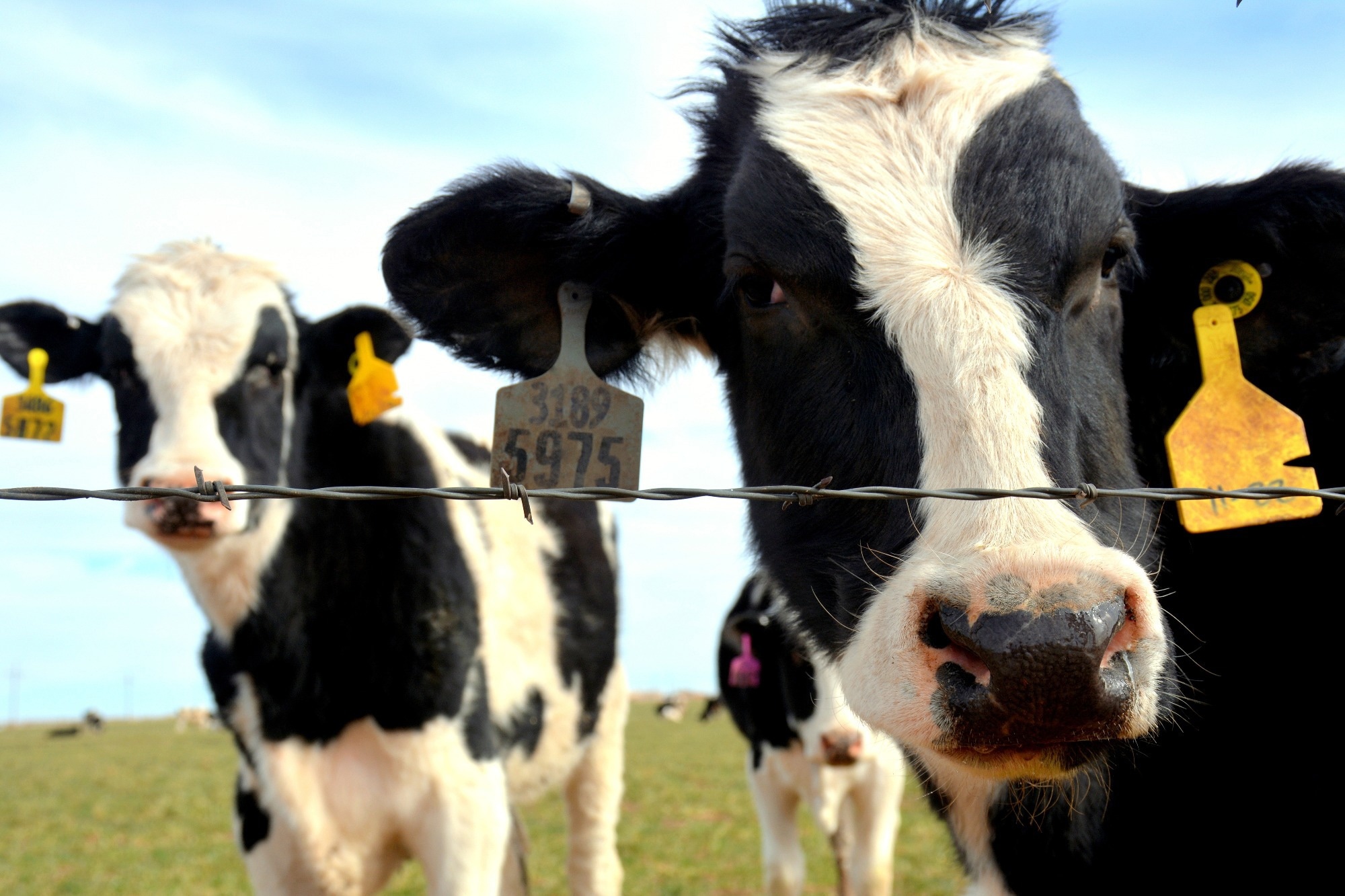Scientists at the University of Texas Medical Branch (UTMB), USA, have detected H5N1 highly pathogenic avian influenza virus (HPAIV) in cattle and milk samples collected from two dairy farms in Texas.
The study, which is currently available on the medRxiv preprint* server, highlights the need to develop effective interventions against H5N1 HPAIV to prevent pathogen spillover.
Image Credit: McKenzie Kizer / Shutterstock
Background

 *Important notice: medRxiv publishes preliminary scientific reports that are not peer-reviewed and, therefore, should not be regarded as conclusive, guide clinical practice/health-related behavior, or treated as established information.
*Important notice: medRxiv publishes preliminary scientific reports that are not peer-reviewed and, therefore, should not be regarded as conclusive, guide clinical practice/health-related behavior, or treated as established information.
H5N1 highly pathogenic avian influenza A viruses (HPAIV) have caused millions of deaths in wild birds and poultry across the world. Recently, these viruses have been identified in many animal species, with HPAIV H5N1 HA clade 2.3.3.4b being the most predominant type in these spillover events.
The U.S. Department of Agriculture has recently detected H5N1 HPAIV infection in 172 cattle farms in 13 states. Four dairy farm and nine poultry farm workers have also been suspected to have these infections recently.
Considering the seriousness of the situation, the current study was designed to investigate the presence of novel respiratory viruses in two Texas dairy farms.
Study design
The study was conducted in two dairy farms in Texas, where H5N1 HPAIV infection was recently detected in cattle. The farm owners invited the scientists to investigate, as they had a research proposal to study novel respiratory viruses in livestock farms in the United States and Mexico.
A total of 17 farm workers were recruited in the study. They provided nasopharyngeal and serum samples for the analysis. Five out of 17 workers reported experiencing respiratory illnesses and using different medications for the condition.
From both farms, a total of 39 cattle nasal swab samples and 14 milk samples were collected for molecular assays, cell and egg culture, and Sanger and next-generation sequencing to isolate and characterize respiratory viruses.
Three-hour bioaerosol samples were also collected from different farm regions to investigate the presence of novel viruses in the environment.
Important observations
The study detected H5N1 HPAIV in nine of 14 milk samples and one of 39 cattle nasal swab samples. However, none of the nasopharyngeal swabs collected from farm workers tested positive for influenza A viruses and coronaviruses.
One nasal swab collected from a sick cow showed the presence of severe acute respiratory syndrome coronavirus 2 (SARS-CoV-2).
Among 14 serum samples collected from farm workers, two showed elevated levels of neutralizing antibodies against a recombinant influenza A H5N1 virus.
Among 24 bioaerosol samples collected from both farms, none showed molecular evidence of influenza A and coronaviruses.
H5N1-positive milk samples were further analyzed using Sanger sequencing and next-generation sequencing for viral characterization. The findings revealed that viruses are closely related to other recent Texas epizootic H5N1 strains of clade 2.3.4.4b.
The mutational analysis revealed the presence of multiple common mutations across isolated viral genomes. These mutations are associated with viral virulence and propagation, host specificity shift, and drug resistance.
Study significance
The study highlights the presence of H5N1 HPAIV infections in cattle in two Texas dairy farms. Although the virus was detected only in one cattle nasal swab sample, about 64% of milk samples tested positive for H5N1 HPAIV.
These findings indicate that although the virus is rapidly cleared from the nasal tissues, infected cattle can shed H5N1 HPAIV in milk for a prolonged period of time.
Most importantly, the detection of anti-HPAIV neutralizing antibodies in farm workers highlights the possibility of previous infections that remained undetected during the acute infection phase.
This highlights the possibility of underreporting of HPAIV infections in farm workers, which can subsequently lead to large outbreaks even outside farm worker communities.
“I am very confident there are more people being infected than we know about,” senior author Gregory Gray, MD, MPH, a UTMB infectious disease researcher, told NPR. “Largely, that’s because our surveillance has been so poor.”
The U.S. Centers for Disease Control and Prevention (CDC) decide whether to vaccinate farm workers against HPAIV based on surveillance data, which indicate a low prevalence of HPAIV infection.
This low prevalence is due to low testing rates among farm workers. Many infections may remain undiagnosed among people who have been exposed to sick dairy cattle.
“Maybe what we see isn’t exactly the tip of the iceberg, but it’s certainly not the whole story,” said Richard Webby, director of the World Health Organization Collaborating Center for Influenza at St. Jude Children’s Research Hospital in Memphis, Tennessee.
Studies identifying novel respiratory viruses are infrequently conducted in dairy farms because of the fear of business loss. As Gregory Gray mentioned, without collaborative efforts between the government and the livestock industry, the U.S. risks about this virus will remain in the dark.
This highlights the need for collecting more comprehensive epidemiological data necessary to design future interventions against H5N1 HPAIV on cattle farms.

 *Important notice: medRxiv publishes preliminary scientific reports that are not peer-reviewed and, therefore, should not be regarded as conclusive, guide clinical practice/health-related behavior, or treated as established information.
*Important notice: medRxiv publishes preliminary scientific reports that are not peer-reviewed and, therefore, should not be regarded as conclusive, guide clinical practice/health-related behavior, or treated as established information.








